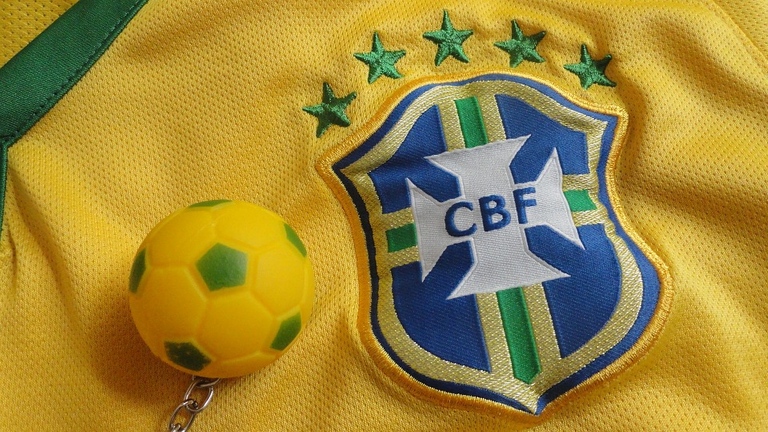The Death Of Brazilian Football: A Change In Players' Quality
Welcome to the last part of this series. Before we start, here's a quick recap.
Part 1
Clubs are run like non-profit organizations, preventing outside investment with team directors aiming to keep their jobs solely on reputation without hiring experts to focus on the long-term results. Add to that corruption and greed. And with the government afraid of the people, those people became untouchable even as they accumulate more debts as they go on.
Part 2
A limited number of managers go from one club to another without making a real change as the average time each manager gets in 15 games, which is not remotely enough to make anything meaningful. Aspiring Brazilian managers either don't make it or just end up joining the pointless rotation in managers. Leading all teams in the Brazilian to one uninspired tactic and a defensive 4-2-3-1 formation.
What Changed Now?
As the problem seems to have started around 2002, one must be asking: Why does it matter now? There are three reasons for that.
Europe's Increased Production of "Skilled" Players
For every Neymar in Brazil, there is Mbappe, Coman, Dembele, Allan Saint-Maximin, Pogba, Fekir, Martial, etc... And that's in France alone. You have Sane, Gnabry, Jamal Musiala, and that's not only just Germany, but that's also just Bayern Munich. Point is, Brazil is no longer the only or even main destination for skilled players.
In the old days, European clubs lacked skilled players, now they have an abundance of choices in those players with rare touches. For every skilled Brazilian player, you can name at least three in European countries, and realistically, you only need one.
The Term "Skill" Changed
What European clubs are seeking is skilled players in terms of passing, high work rate, and tactical awareness. Those are all things Brazilians aren't really known for, and even those who have it may not seem worth bringing across continents and risk their adaptability.
Brazilian Production Itself Has Changed
What we said about skilled players, in both meanings, doesn't exist in Brazil itself. Not that Brazil is producing fewer talents, just the type of talents has changed. That is the result of the toxic environment created by clubs directors.
In the end, managing a club is a job for people to make a living. Managers' salaries in Brazil aren't high, to begin with. Add to that the 15 games average and the threat it creates, which kicks in a survival instinct that makes them less able to take risks. The goal is to avoid losing.
The 4-2-3-1
When most clubs directors follow the same system and with the club rotating managers, eventually, it led to most clubs looking like they were a copy of each other.
The 4-2-3-1 in its defensive shape is something you will see a lot in Brazil. The types of players are the same. The two CDMs for example are less required to pass and more required to be defensive completely. Wingers need to be able to track back and defend, everyone aims to defend. Everyone is afraid of taking risks. As for the fullbacks, can you even name one top-level Brazilian fullback with offensive qualities?
The Same Mentality Goes To The Academies
With first teams selling their players as soon as they can, academies are required to produce more players to promote. There's pressure on the first team manager that transfers to the academy's managers, which eventually transfers to the young players themselves.
Any great European football academy you can think of aims to create a less pressuring environment for their players, winning doesn't matter for youngsters and their managers as the aim to create players with abilities to try different things. That is how players are developed.
It Is All Reversed Now
After clubs in Germany, France, Spain, and England aimed at bringing offensive Brazilian players, they now bring in a different type of players. Players who have a high work rate and are solid defensively, the type of players produced by the 4-2-3-1 in its defensive shape. Mainly central defensive midfielders.
Casemiro, Fabinho, Fred, Douglas Luiz, and Everton Ribeiro are 5 defensive midfielders out of 6 midfielders for Brazil in the last Copa America. That is the result of an entire nation playing that defensive style.
Brazil's production of creative midfielders, fullbacks, and offensive players is completely rare, with only a handful of exceptions. And even those exceptions are created due to European clubs aiming to get those players at their youngest before they get downgraded by the environment.
Toxic Football Environment
This seems like the appropriate result of emotional electing to ex-players over experts. A culture that deprives you of the right to criticize if you haven't won an x amount of trophies.
In Conclusion
When I talk about the death of Brazilian football. I didn't mean it in the sense that the league will die soon, or that Brazil won't be making a World Cup in upcoming years. What I mean is the beautiful Samba style we all got used to and associated with Brazil. Although the quality is in decline, I don't Brazil for missing major tournaments, for the foreseeable future at least. But, I really don't see them winning it or even reaching a semi-final, especially after seeing the last Euro.
Brazil is no longer producing beautiful football, and that's just something we have to live with.
I will end this series with a quote from Wallim Vasconcellos, vice-president for football at Flamengo, the only club that seems to be getting out of that mentality.
If you have good management and credibility, you will have more money. If you have more money, you can invest. There is no magic

The map of football in the world has changed
You definitely have a lot of insight into soccer. Thanks for sharing.